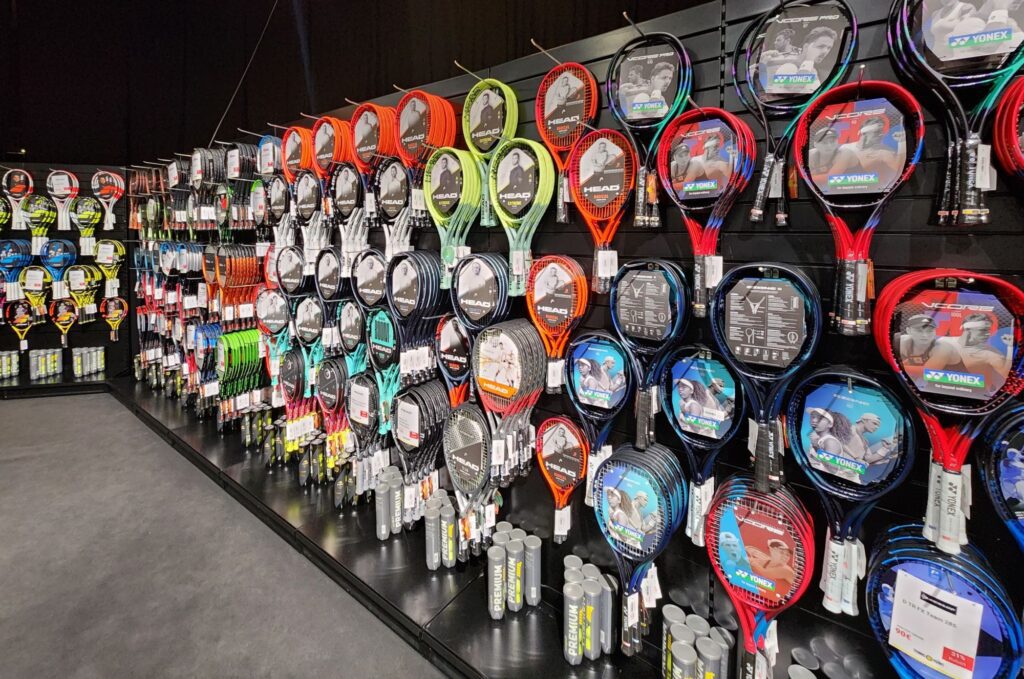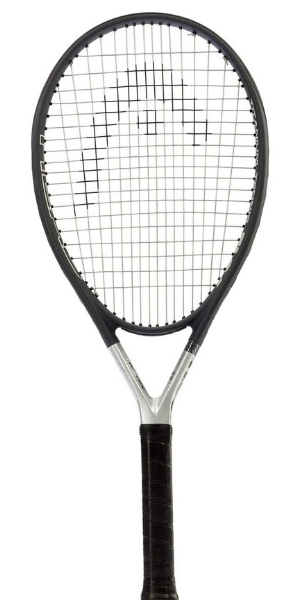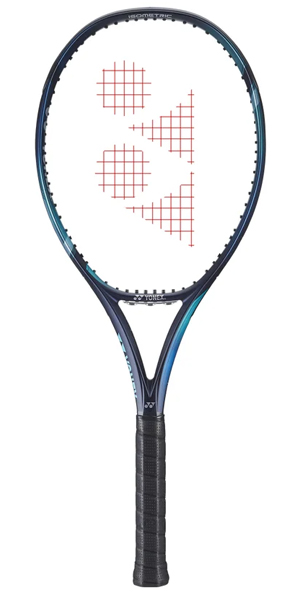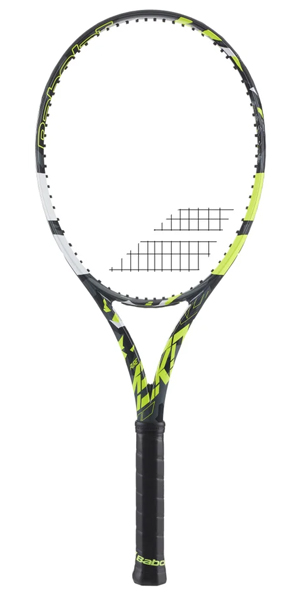When you buy a product through our links below, we may earn money from our affiliate partners to help support the site. However, this does not affect our evaluation or recommendation of each product. See our list of partners & how we get paid here. You can also learn our process for reviewing tennis gear here.
After testing, studying, and researching all the best tennis racquet brands, we have our picks for the best tennis racquets overall for 2025.
Whether you are a beginner or a more advanced tennis player, you have a lot of choices when it comes to racquets. Below, we’ll help you find the perfect racquet for your skill level, budget, and preferences. Before we get into the specifics, here is the list of top racquets for 2025.
Leave a comment at the bottom of this page for more personalized racquet recommendations from one of our experts.
The 9 Best Tennis Racquets for 2025
The table below has the top racquets based on skill level and playing style.
These are not necessarily in the best order for you. Depending on your skill level, athletic ability, and experience, some racquets will be better for you than others. We recommend reading our detailed reviews of each racquet to choose the best option for you.
Click the links below to order your racquet from Tennis Warehouse.
| Category | Racquet |
|---|---|
| Best Racquet for Beginners | Head TI S6 Jump to Review |
| Best Racquet for Intermediate Players | Yonex Ezone 100 Jump to Review |
| Best Racquet for Advanced Players | Wilson Blade 98 Jump to Review |
| Best Racquet for Power | Solinco Blackout Jump to Review |
| Best Racquet for Control | Wilson Pro Staff Jump to Review |
| Best Racquet for Spin | Babolat Pure Aero Jump to Review |
| Best Racquet for Women | Babolat Pure Drive Jump to Review |
| Best Racquet for Seniors | Volkl V-Cell 1 Jump to Review |
| Best Racquet for Juniors | Yonex VCore 26″ Junior Jump to Review |

More Resources on the Best Tennis Racquets
If you’d like to see more racquets or want to do further research on choosing the best racquet, these resources will help. Read our reviews by skill level, brand, or type of tennis racquet.
Best Tennis Racquet Brands
Tennis Racquet Reviews By Type
3 Steps to Find the Perfect Tennis Racquet for Your Game
Free checklist with 27 racquet recommendations
Reviews of the 9 Best Tennis Racquets for 2025
Below, we’ll review each of the top racquets on our list in more detail.
Best Tennis Racquet for Beginners – Head TI S6
- Skill Level: Beginners
- Where It Excels: Great starter racquet that helps with power for under $100.
- What It Lacks: Serious beginners will struggle with control as they improve their game.
The Head TI S6 tops our list of the best tennis racquets for beginners due to it’s large head size and budget-friendly price. For beginners who are interested in tennis but not sure they want to commit for the long term, the Head TI S6 is a great racquet. It’s affordable, yet still offers excellent quality that will allow you to improve. It has a large head size and sweet spot which helps new players generate good power and create confidence. If you improve to the intermediate level this racquet will still work, but you may consider switching to a more advanced racquet like the Yonex Ezone below.
Read our full Head TI S6 Review.
Specifications
- Head Size: 115 sq. in.
- Strung Weight: 8.9 oz.
- Length: 27.75 in.
- String Pattern: 16×19
Best Tennis Racquet for Intermediate Players – Yonex Ezone 100
- Skill Level: Intermediate to Advanced
- Where It Excels: Great combination of power & feel.
- What It Lacks: Not great stability for an advanced racquet resulting in loss of control on some volleys.
The Yonex Ezone 100 tops our list of the best tennis racquet for intermediate players for its great balance of power and control. Yonex is a fast growing tennis brand that makes some of the best racquets in the world. The Ezone is a well balanced racquet built with great power, comfort, and feel. It has a 100 square inch frame and open string pattern for plenty of spin as well. Any player who wants controlled power from the baseline will like this racquet.
Read our full Yonex Ezone Review.
Specifications
- Head Size: 100 sq. in.
- Strung Weight: 11.2 oz.
- Length: 27 in.
- String Pattern: 16×19
Best Tennis Racquet for Advanced Players – Wilson Blade 98
- Skill Level: Intermediate & Advanced
- Where It Excels: One of the most comfortable advanced racquets on the market.
- What It Lacks: Not great for generating power.
The Wilson Blade is the first racquet on our list of the best tennis racquets for advanced players, and one of the most popular racquets in the world. This version of the Blade is a very comfortable, arm-friendly racquet. It has good stability for its weight and helps you control both groundstrokes and volleys with a combination of spin and precise feel. This racquet is great for players who can generate their own power, but want something easy on the body.
Read our full Wilson Blade Review.
Specifications
- Head Size: 98 sq. in.
- Strung Weight: 11.4 oz.
- Length: 27 in.
- String Pattern: 16×19
Best Tennis Racquet for Power – Solinco Blackout
- Skill Level: Intermediate to Advanced
- Where It Excels: Great power and feel.
- What It Lacks: Not great maneuverability at the net.
The Solinco Blackout tops our list of the best tennis racquets for power. It is a relatively new racquet, but it impressed us enough to earn its way onto our rankings. It has fantastic power and surprisingly good feel, even at the net. It also has exceptional spin potential. There is also a lighter version for younger players, an extended length version for increased power, and even an extended length plus version for unmatched reach and power.
Read our full Solinco Blackout Review.
Specifications
- Head Size: 100 sq. in.
- Strung Weight: 11.3 oz.
- Length: 27 in.
- String Pattern: 16×19
Best Tennis Racquet for Control – Wilson Pro Staff v14
- Skill Level: Advanced
- Where It Excels: Precise feel & control. Great stability against pace as well.
- What It Lacks: Heavier racquet that is more difficult to maneuver.
The Wilson Pro Staff is our first pick for the best tennis racquets for control. It has an iconic feel and has been used by legends like Pete Sampras and Roger Federer. This advanced racquet has a comfortable, stable, 97 square inch frame with an open 16×19 string pattern which helps increase power and spin. This is one of the best tennis racquets for advanced players on the market. It handles pace well and offers unmatched feel on volleys and slice shots.
Read our full Wilson Pro Staff Review.
Specifications
- Head Size: 97 sq. in.
- Strung Weight: 11.7 oz.
- Length: 27 in.
- String Pattern: 16×19
Best Tennis Racquet for Spin – Babolat Pure Aero
- Skill Level: Intermediate & Advanced
- Where It Excels: Maximum spin plus good power.
- What It Lacks: Control & stability when defending against pace.
Endorsed by Rafael Nadal, the Babolat Pure Aero is an offensive weapon, topping our list of the best tennis racquets for spin. It will help you generate tons of spin and power on both groundstrokes and serves. If you get an approach shot, for example, this racquet is what you’ll want in your hands. It’s a great racquet for intermediate and advanced tennis players who play with aggression.
Read our full Babolat Pure Aero Review.
Specifications
- Head Size: 100 sq. in.
- Strung Weight: 11.2 oz.
- Length: 27 in.
- String Pattern: 16×19
Best Tennis Racquet for Women – Babolat Pure Drive
- Skill Level: Most skill levels.
- Where It Excels: Power at the baseline & on serves.
- What It Lacks: Not the best for control, but still solid.
The Babolat Pure Drive is the first one our list of the best tennis racquets for women, and has been one of the top tennis racquets in the world for players of all abilities for years. Used by several professional tennis players, this racquet is known for its power from the baseline. It also helps you create good spin, offers solid stability, in a comfortable frame.
Read our full Babolat Pure Drive Review.
Specifications
- Head Size: 100 sq. in.
- Strung Weight: 11.2 oz.
- Length: 27 in.
- String Pattern: 16×19
Best Tennis Racquet for Seniors – Volkl V-Cell 1
- Skill Level: Beginner to Intermediate
- Where It Excels: Great combination of power & comfort.
- What It Lacks: Not great control for advanced seniors.
Volkl has created the ultimate racquet for seniors in the V-Cell 1. It is very light and has a powerful, forgiving 115-square-inch head size. Most importantly, this racquet is also extremely comfortable to help minimize the risk of injury. The V-Cell 1 also features an extended length to help maximize your reach on court.
Read our full Volkl V-Cell 1 Review.
Specifications
- Head Size: 115 sq. in.
- Strung Weight: 9.6 oz.
- Length: 27.8 in.
- String Pattern: 16×17
Best Tennis Racquet for Juniors – Yonex VCore 26″ Junior
- Skill Level: Beginner to Intermediate
- Where It Excels: Great spin and maneuverability.
- What It Lacks: Stability can suffer against opponents using full-sized racquets.
Yonex makes one of the few junior racquets still made with the same quality and materials of adult racquets. This makes the VCore 26″ Junior racquet the best tennis racquet for juniors who aren’t quite ready for a full-sized racquet. It is lightweight and easy to maneuver, along with a spin-friendly 16×18 string pattern. As you transition to playing bigger and stronger opponents, stability can be a challenge, but until you grow enough to handle a full-sized racquet, this racquet will do everything you need it to do.
Specifications
- Head Size: 100 sq. in.
- Strung Weight: 8.8 oz.
- Length: 26 in.
- String Pattern: 16×18
Buyer’s Guide: How to Choose a Tennis Racquet
You may not even know where to start or what questions to ask when looking for a new racquet. First, you need to decide your skill level.
What is your skill level?
Put yourself into one of these three categories.
- Beginner: I’m just starting to learn tennis.
- Intermediate: I used to play tennis or started playing recently and want to keep improving.
- Advanced: I play regularly and control shots with placement, spin, and power.
After you know your skill level, you’ll want to consider your overall goals, athletic ability or hand-eye coordination, and budget.
Consider Your Tennis Goals, Athletic Ability, & Budget
Depending on what you want to achieve, some racquets will be better for you than others.
Your Tennis Goals: Do you want to improve? Or just play for fun?
If you’re serious about improving your tennis game, then you’ll want to invest in the best tennis gear, including a high-quality racquet (or two!). A backup racquet is a good idea too, preferably the same as your first racquet. This allows you to keep playing even if you break your tennis strings on court.
See our list of the best tennis bags to carry your racquets.
If you just want a reliable racquet to play recreationally a few times per month, then you’ll probably only need one racquet and can choose something a bit cheaper.

How Athletic Ability & Hand-Eye Coordination Determine The Best Racquet for You
- If you’re a beginner, have you played other sports in the past?
- What are your fitness level, mobility, hand-eye coordination, and physical strength?
Older players who are not as athletic as they once were or players without the best hand-eye coordination should consider the best tennis racquets for power or those with a larger head size.
Someone who is in their 30’s and plays lots of sports can use a more control-oriented racquet with a smaller head size, even if they both have the same skill level.
What is your budget?
The best racquets can be well over $200. That price doesn’t make sense for a beginner who isn’t sure if they will keep playing tennis. Think about what budget makes sense for you based on the goals above and your income.
Serious tennis players should budget at least $150 per racquet.
If you are on a budget but still want a high-quality racquet, try to take advantage of sales. Most companies release new versions of their racquets every 2-3 years. When they release a new version, they will almost always give a significant discount to the remaining stock of the outgoing version.
Recreational players can find racquets for around $100 or less.
The best part is, most updates from one version to the next of the same racquet are minimal, so you will still be getting excellent quality racquets for a fraction of the cost!
Tennis Racquet Specification Chart
Many tennis racquet brands can confuse you with terms like balance, swingweight, flex rating, and so on. We’ve made it simple for you, with just the most important specifications below.
This chart will give you a high-level idea of what to look for in a tennis racquet.
| Racquet Specifications | Beginner Players Only | Intermediate & Some Beginner | Advanced & Some Intermediate |
|---|---|---|---|
| Head Size (sq. inches) | 107 – 115 | 100 – 110 | 95 – 100 |
| Length (inches) | 27-28 | 27 – 27.5 | 27 – 27.5 |
| Weight (strung) | Under 11 Ounces | 10.1 – 11.5 Ounces | Over 11 Ounces |
| Price | Under $150 | $100 & up | $150 & up |
| Power vs Control | More Power | Balanced Racquet | More Control |
Stop paying full price for tennis gear! Get deals on shoes, racquets & more up to 70% off.
Terms to Know When Shopping for Tennis Racquets
When you start shopping for a new racquet, there are many terms that the manufacturers use to help you understand how the racquet will perform on the court. Below, we’ll go over the most important terms to understand, and other common terminology, mostly for advanced players.

Tennis Racquet Terms Everyone Should Know
- Head Size: The head size refers to the part of the racquet that holds the strings together. Most modern racquets have a head size of 95 to 120 square inches.
- Weight: The weight refers to the weight of the entire racquet, sometimes measured with strings, sometimes without. One of the most popular tennis racquet sellers, Tennis Warehouse, measures the strung weight of each racquet. When comparing, make sure you are consistent. Most racquets fall between 9.5 and 12.5 ounces strung.
- Length: A standard tennis racquet is 27 inches long, but may be up to 29 inches. Junior racquets (made for kids) range from as little as 17 inches for kids barely able to swing a tennis racquet, to a standard 27 inches long. Anything over 27 inches is considered “extended length.”
- String Pattern: String pattern refers to the number of main (vertical) and cross (horizontal) strings in the racquet. The most common string patterns are 16×19 and 18×20, but any number can be used. The higher the numbers, the closer the strings will be together. This is called a “tight” string pattern and helps players with control and feel. Smaller numbers of mains and crosses make for an “open” string pattern adding power and spin. If you need help deciding which type of string to use, see our list of the best tennis strings. If that list is a little overwhelming or confusing, learning about the different tennis string types might help you narrow your search.
- Grip Size: When you purchase a racquet, you can choose your grip size. These available grip sizes are typically 4 ⅛, 4 ¼, 4 ⅜, 4 ½, & 4 ⅝. You’ll often see them numbered 1, 2, 3, 4, 5. For most players, a 4 ⅜ (#3) grip will do. Depending on your hand size, go up or down an eighth accordingly. When holding the racquet in your hand, there should be a small gap between the tips of your fingers and your hand.

Other Terms for Higher Level Players
Below are other terms you may see, but most players can ignore. These terms are used by more advanced players who need to get every detail right.
- Balance: The balance of a racquet refers to how the weight is distributed throughout the racquet. Some racquets are “head light” meaning there is more weight in the handle, increasing maneuverability. Head heavy racquets have added stability and power but are more difficult to swing.
- Swingweight: This term refers to the ease with which a player can swing the racquet. Most racquets have a swingweight between 305 and 335 (strung). A higher swingweight means the racquet is more difficult to swing. Typically head heavy racquets have a higher swingweight.
- Stiffness (or flex): The stiffness of a racquet refers to how flexible it is. Most racquets will fall between 55 and 75, with high numbers equating to stiffer racquets. A stiffer racquet will have increased power and stability but less comfort and feel. Players with elbow tendonitis should consider a less stiff racquet.
- Beam Width: The beam width refers to the racquet frame’s width when looking at it from a profile view. This is usually measured in millimeters. A racquet with a wider beam will typically have increased power while smaller beams will offer better control and feel.
When purchasing a tennis racquet, also keep in mind that you can change the properties of your racquet slightly post-purchase. Learn how by checking out our article on how to customize a tennis racquet.
Demo Racquets to Discover What You Like
Lastly, when shopping for a new tennis racquet, it’s important to demo. Tennis Warehouse allows you to demo up to three racquets at a time. The price you pay for each demo is deducted from any new racquet you purchase, so it’s basically free to demo.
Local tennis shops will also allow you to try out racquets before purchasing them. With so many racquets available in today’s market, it’s difficult to find the perfect racquet for you by just looking at the specs.
Once you have an idea of what kind of racquet you want to try, demo 2, 3, or even 4 racquets and take them all out onto the practice court together. Make sure to practice all aspects of your game, and even talk to your hitting partner or coach and see which racquet they think helped you play your best. Then you can purchase your new racquet with confidence that you made a smart purchase.
If you aren’t sure where to start, we can help! Email us or add a comment telling us a little bit about you as a player, what racquet you’re currently using, and what you want out of a new racquet, and we’ll give you personal recommendations to help you find the right racquet.










Leave a Reply